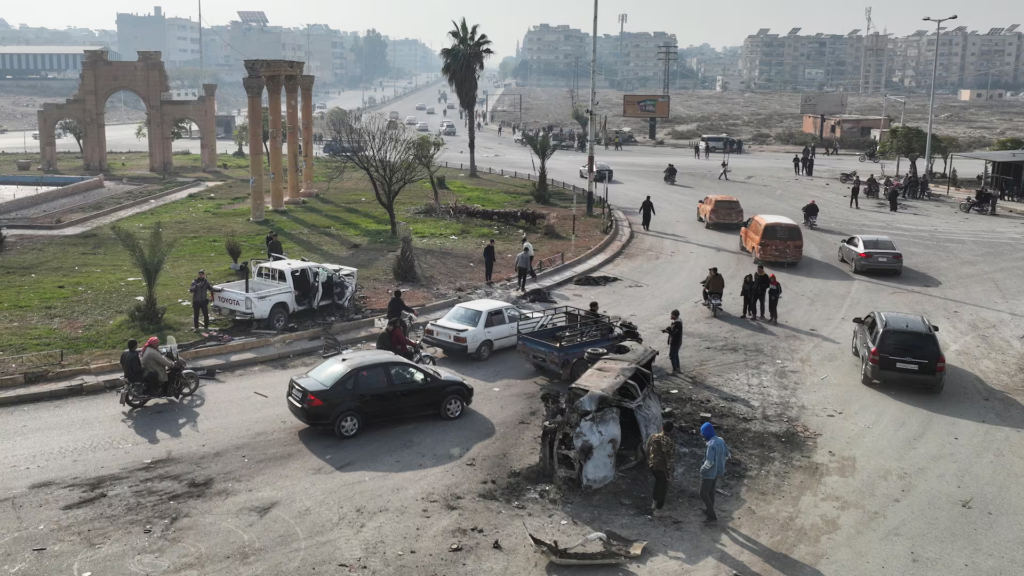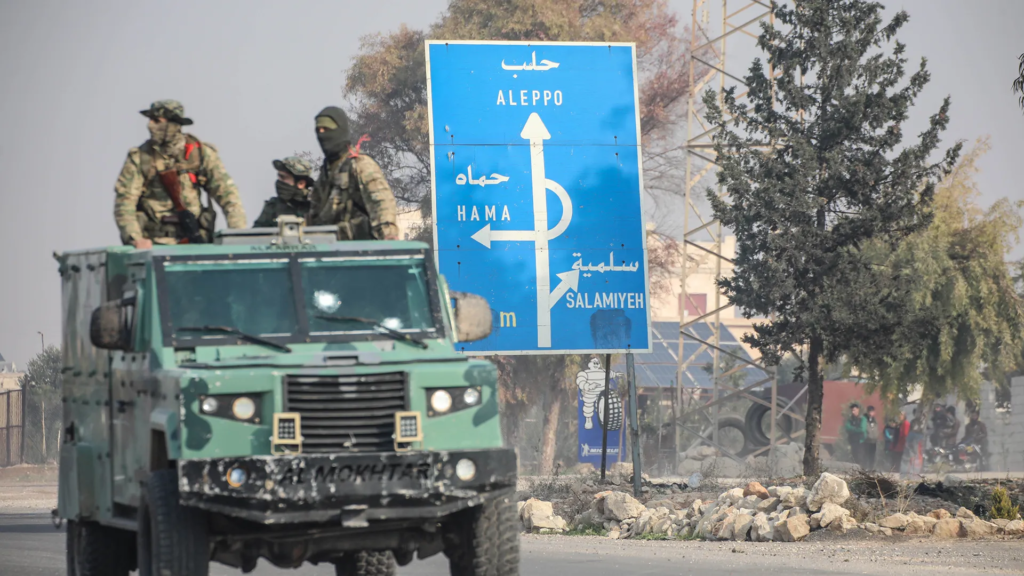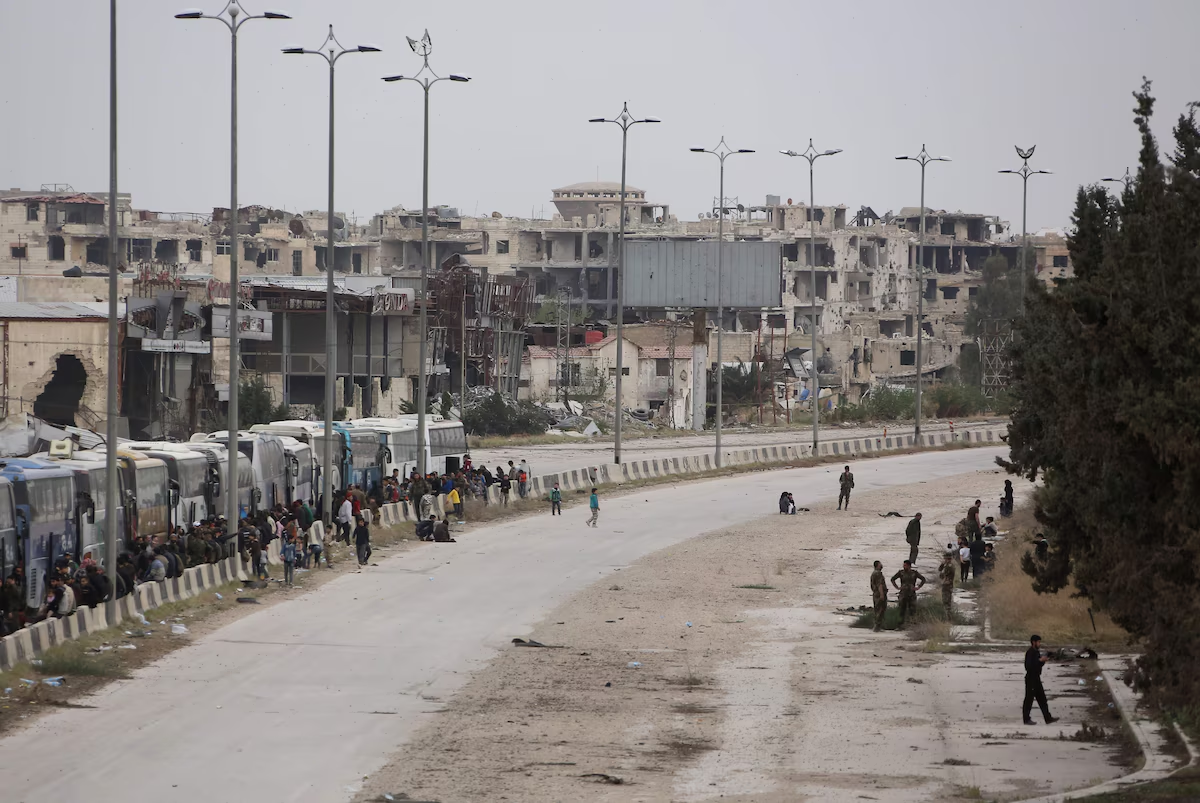The latest development marks a significant moment in the conflict as Daraa, a city of immense historical and symbolic importance, has fallen out of government control and into the hands of rebel factions.
The ongoing Syrian conflict has seen numerous twists and turns over the past decade, with shifting alliances and the relentless struggle for control over key territories.
This dramatic shift not only underscores the fragile grip of the Syrian regime in certain regions but also highlights the growing strength and coordination of local and Islamist-led rebel groups.
Daraa: The Cradle of the Revolution
Daraa is no ordinary city in Syria’s complex narrative. Known as “the cradle of the revolution,” it was here in 2011 that the first sparks of the uprising against President Bashar al-Assad’s regime were ignited.
A small protest by schoolchildren was met with a brutal crackdown, fueling widespread demonstrations across the country. Over the years, the city has been a battleground for various factions vying for control.
In the most recent turn of events, rebel groups have taken over Daraa after securing a deal with the Syrian army for an orderly withdrawal. This deal has allowed senior security and army officials stationed in the city to leave safely for Damascus.
The loss of Daraa comes as a major blow to the Assad regime, which has struggled to maintain its hold over the southern province.
Read : Is Ukraine Behind the Syrian Rebel Offensive in Aleppo?
According to the Syrian Observatory for Human Rights, a Britain-based monitoring group, rebel factions now control over 90 percent of Daraa province. This victory is particularly significant given Daraa’s strategic location bordering Jordan, which has historically been a gateway for aid and resources into southern Syria.
The Role of Rebel Groups and Alliances
The capture of Daraa by local armed groups differs from the recent losses of Aleppo and Hama, which were overtaken by an Islamist-led rebel alliance.
This distinction highlights the fragmented nature of the Syrian opposition, with different factions holding sway in various parts of the country.
This is Not Formula one, or two !
— 𝔇𝔯 𝔄𝔡𝔑𝔞𝔧𝔦. (@AdamNN) December 6, 2024
This is the Free Syrian people going to Daraa city, to liberate their city from Assad , Iran and Russia regime, on bikes .
pic.twitter.com/TpPFkChZUS
Local factions in Daraa have demonstrated remarkable resilience and organization, managing to oust regime forces despite the challenges posed by internal divisions and external pressures.
Their success can be partly attributed to their ability to rally support from the local population, which has long harbored grievances against the Assad regime.
The situation in Daraa reflects a broader trend of declining government control in Syria. In recent days, the regime has also lost significant ground in Aleppo and Hama, two of the country’s largest cities.
These losses have emboldened rebel groups and exposed the vulnerabilities of the Assad government, even as it receives backing from powerful allies like Russia and Iran.
Implications for the Future of Syria
The fall of Daraa raises critical questions about the future trajectory of the Syrian conflict. Despite a Russian-brokered truce in the region, Daraa has been plagued by violence, including clashes, assassinations, and attacks. The latest developments suggest that these issues are far from resolved and may, in fact, escalate further.

The strategic importance of Daraa cannot be overstated. Its proximity to the Jordanian border makes it a crucial link for trade and humanitarian aid.
With the city now under rebel control, the Assad regime faces significant logistical and political challenges in the south. Furthermore, the victory in Daraa may inspire similar movements in other contested areas, potentially altering the balance of power in Syria.
For the Syrian people, the fall of Daraa is a bittersweet moment. While it represents a victory against a regime that has long suppressed dissent, it also signals continued instability and uncertainty.

The local population, already burdened by years of conflict, must now navigate life under a new administration whose ability to govern effectively remains untested.
The loss of Daraa marks a turning point in the Syrian conflict, highlighting the Assad regime’s waning influence and the growing strength of rebel factions.
As the cradle of the revolution, Daraa’s fall is both a symbolic and strategic setback for the government, underscoring the enduring challenges of achieving stability and unity in Syria.
The road ahead is fraught with uncertainty, as various factions continue to vie for control and the specter of violence looms large. For Syria, the fall of Daraa is a stark reminder of the complexities of its ongoing conflict and the urgent need for a comprehensive and inclusive resolution to the crisis.

